Sometimes, when you leave a succulent in full sun for too long or introduce it to full sun without slowly acclimating it, it will become sunburnt, may lose its leaves and will definitely turn brown. This is not necessarily a bad thing—if you can see new growth coming out of the stem after a few days. Succulents are known for their ability to thrive in bright, indirect light. Too much direct sun can lead to sunburnt leaves and damaged plants. In this blog post, we’ll go over how to prevent sunburnt succulents and keep your plants healthy and happy.
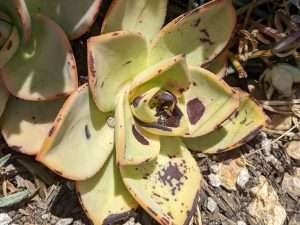
Guide to Sunburnt Succulents:
What Causes Sunburnt Succulents?
Succulents are native to arid climates and are adapted to withstand bright sunlight. However, they can still be susceptible to sunburn if they get too much direct sun during the hottest hours of the day.
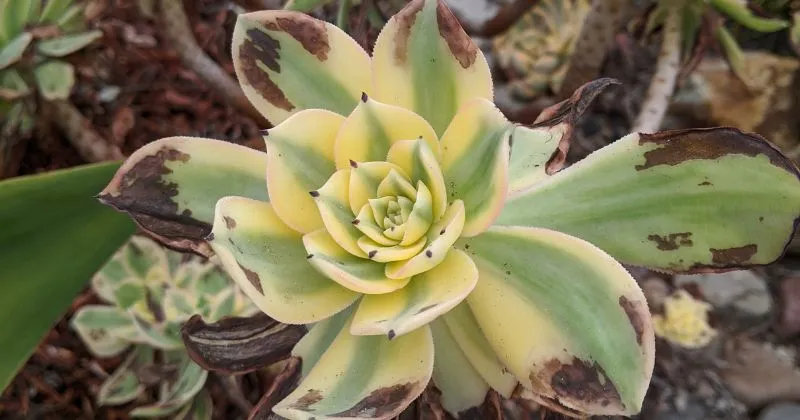
Some succulents are more susceptible to sunburn than others. If you’re looking to add some plants to your collection, we recommend purchasing a variety that isn’t as sensitive to the sun. Sunburnt succulents develop brown leaves and stems, making them unattractive but that doesn’t necessarily mean they’re dead.
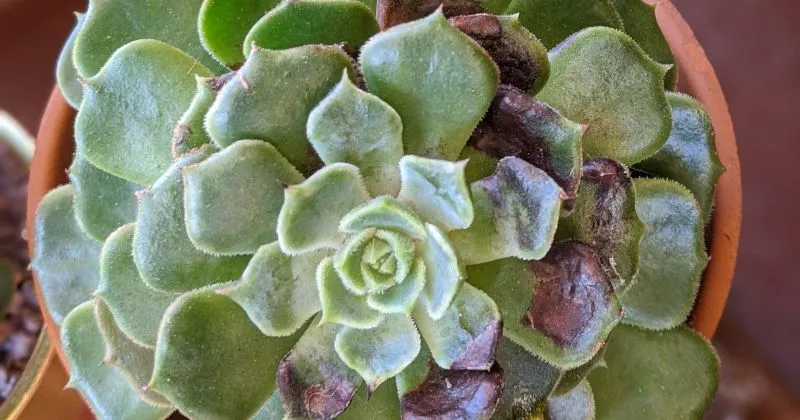
Sunburn is most common when a succulent that normally grows in shade is suddenly moved into direct sunlight. The leaves are not able to handle the intense light and become scorched. Moving the succulent back to shade and gradually acclimating it to more light can help avoid sunburn.
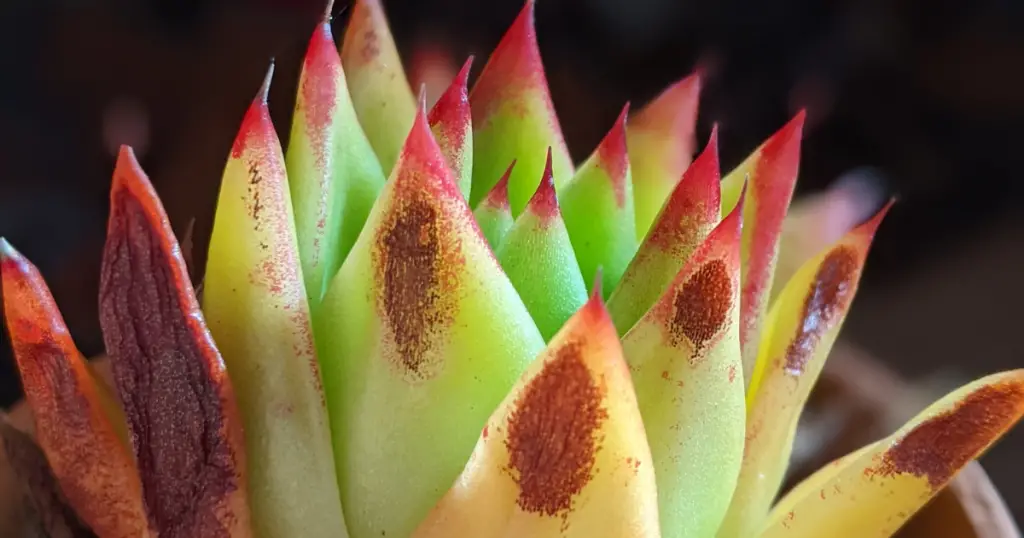
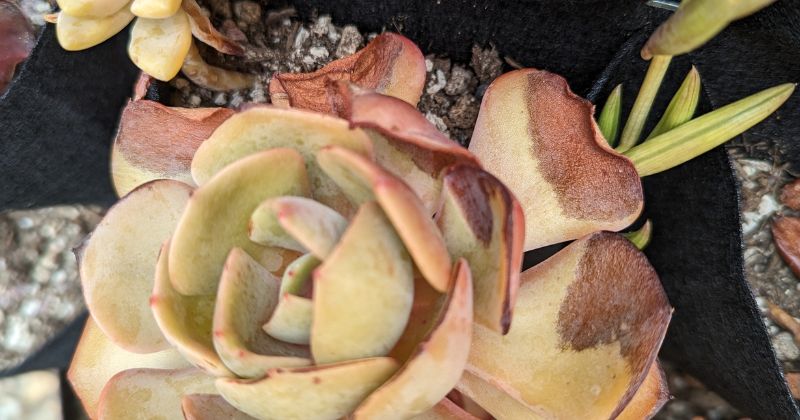
How to Prevent Sunburnt Succulents
To prevent sunburnt succulents, it’s important to choose the right location for your plants. Place them in a location with bright, indirect light and protected from direct sun during the hottest hours of the day. A south- or west-facing window is typically a good choice, as long as the plants are protected from direct sunlight.
- Place your new succulent in a shaded area where it won’t receive direct sunlight for long periods of time (ideally at least 6 hours per day). If you live in an area where there is no shade available, try using a plant stand or planter with an umbrella over it!
- Water your new plant often enough so that its soil remains moist but not soggy—this will help reduce damage caused by dehydration from prolonged exposure to heat waves!
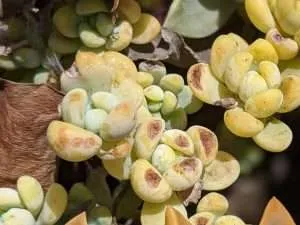
But there is good news! A sunburnt succulent can still recover. The key is to give them time to heal and allow new leaves to sprout from the stem. Just be sure not to water them until you see new growth in less than a week, or else they’ll rot.
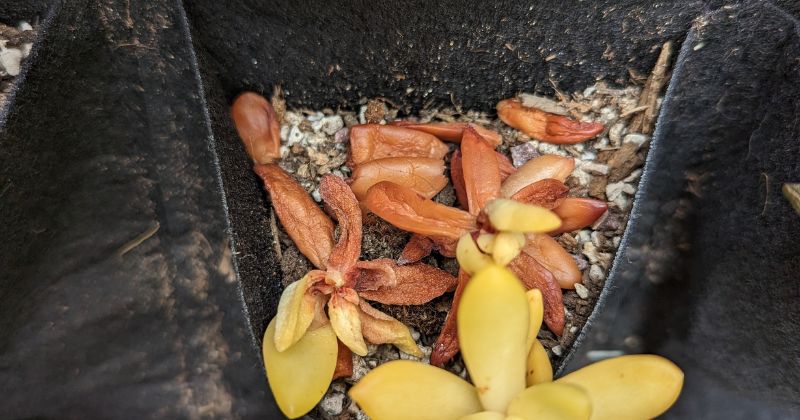
If you were wondering how long this takes, I’m afraid we don’t know for sure—it depends on your plant’s specific circumstances. In general, however: if you see new growth emerging from your succulent after about 10 days (or less), then start your care cycle as normal again!
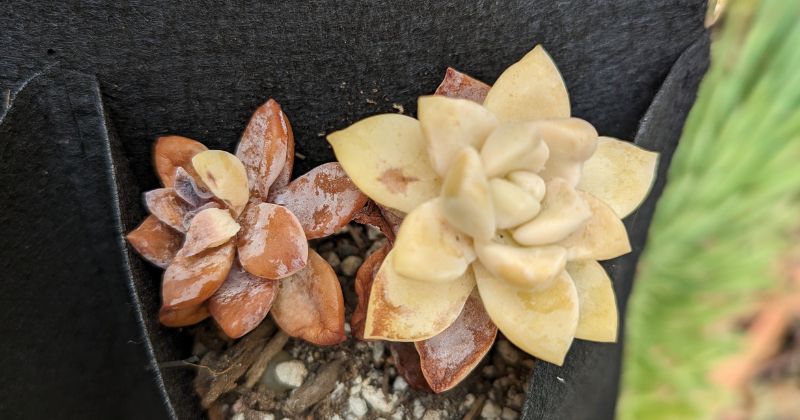
Some succulent species, especially those from arid climates, are more tolerant of intense light and less prone to sunburn. If your succulents are getting sunburnt, consider switching to a species more adapted to your climate and light conditions. With time and experience, you’ll learn which succulents do best in your environment.
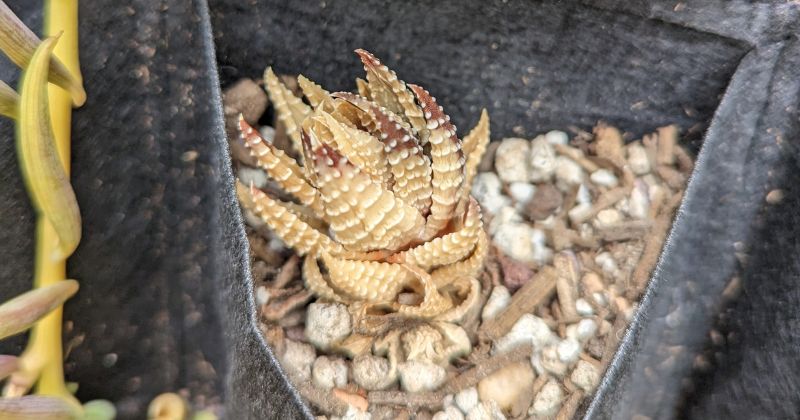
Watering a Sunburnt Succulent
When it comes to watering your sunburnt succulent you should definitely avoid doing so.
The plant is in shock and needs time to recover. You can’t force-feed it with water or do something that will give immediate results! The best thing that you can do for your sunburnt succulent is allow it to rest and recover.
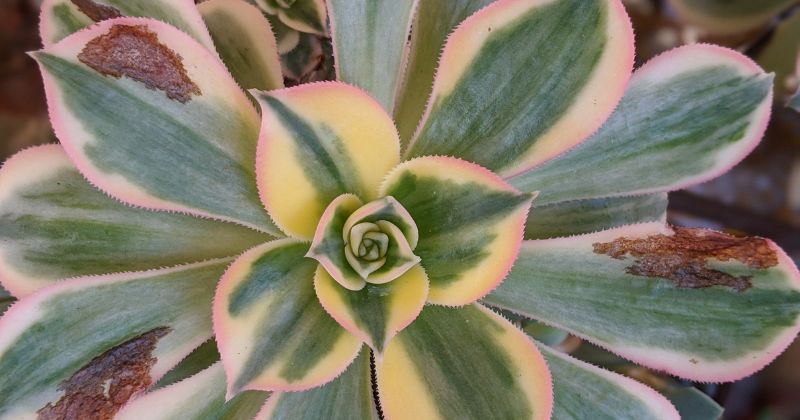
Proper watering is also crucial for preventing sunburnt succulents. Succulents are prone to root rot if they are watered too frequently. It’s important to let the soil dry out completely between waterings.
Rule of thumb: Water your succulents once a week during summer and once every two weeks during winter.
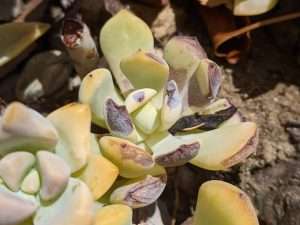
Sun Protection
If you live in a hot, sunny climate and are concerned about sunburn place your succulents in a location with filtered sunlight. During recovery time, place your sunburnt succulents in a shaded spot with indirect sunlight. This will help to protect them from further damage and keep their leaves green.
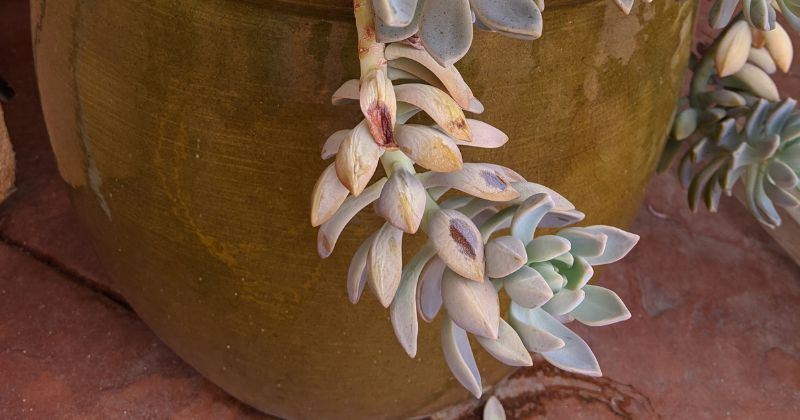
Provide shade by using an umbrella or cover that keeps the direct sun away from your plants. Be careful not to put too much shade on them. This can cause more harm than good! If you want more permanent protection for your plants, consider putting them under a covered porch!
Shade cloth is my preferred way to protect my succulents while acclimating them to full sun. In San Diego, I’m very fortunate to be able to put my succulents in the full sun all day. That doesn’t mean they don’t get sunburnt as shown by the pictures in this post. Here’s some shade cloth that you can use to protect your soft succies from the sun’s harsh rays: https://amzn.to/3oZJPEL
What are some succulent species that are more tolerant of intense light?
Some species that are more tolerant of intense light include:
• Aloe vera: Aloe vera is a popular succulent that can tolerate full sun. It produces yellow flowers and has medicinal gel in its leaves.
• Echeveria purpusorum: This echeveria has pink and red leaves and can handle intense light and heat. It needs minimal water and is suited to sunny, dry succulent gardens.
• Crassula sarcocaulis: Commonly known as the Buddha’s temple succulent, Crassula sarcocaulis has small leaves that turn reddish in full sun. It is very tolerant of intense light and heat.
• Opuntia species: Opuntia cacti, such as prickly pear, are tolerant of very intense light and heat. They have oval pads and showy flowers in red, yellow, and orange.
• Sedum species: Many sedum succulents, such as Autumn Joy sedum, tolerate full sun and are adapted to hot, dry climates. Their leaves often turn shades of red under intense light.
• Sempervivum species: Commonly known as hens and chicks, sempervivum succulents are very tolerant of full sun and drought. Their tight rosettes come in a variety of colors, and they produce offsets that spread into attractive clumps.
By choosing succulents such as these that can handle intense light, you will have more success growing them in very sunny conditions. They are well-adapted to heat and sunlight and will thrive under the environmental conditions that may cause sunburn or stress for other succulents. With the right species selections, you can have a beautiful succulent garden or collection even with very sunny exposure.

Where to Buy Succulents Online

